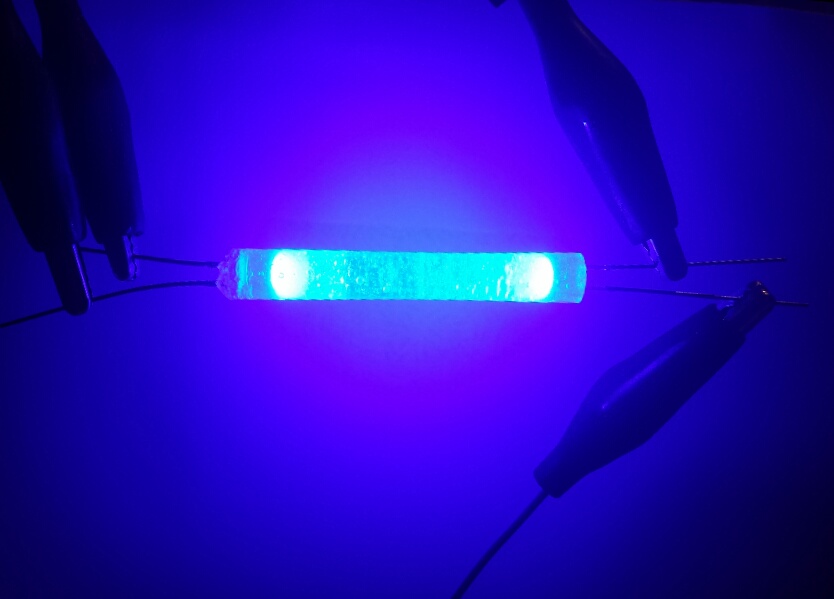I found some soda straws that are thin and about the same color blue as the blue LEDs I got from goldmine-elec.com. I got the idea of using a soda straw from Quantsuff at quantsuff.com. He used two white LEDs in the ends of a short length of white translucent (semitransparent) soda straw to give the effect of a mini fluorescent lamp. I thought it might look good with blue LEDs in a blue soda straw.

I cut off a 1-3/4 inch (43mm) length and glued one LED in with clear nail polish. I let it dry but when I handled it, the straw flexed and the LED came loose and was no longer straight. I pulled it out and put more nail polish on it and put it back in the straw and let it dry. Later I again had the same problem, so I decided I needed a stronger glue.
I bought some two part epoxy glue and mixed up a small amount of each part on a piece of paper with a toothpick. I applied the epoxy to the inside of the straw and to the LED, and put the LED in the straw. A few minutes later it had cooled off and hardened. No more loose LED; it was held in solid.
I’m going to connect the LED up to a power supply to see how it looks, and then if it’s okay I’ll epoxy another LED to the other end.
I picked up the paper with the spot of epoxy on it and noticed that the spot got lighter and darker as I moved it around. This is the same effect that I saw when I put a drop of oil on a piece of paper to make a grease spot light comparison meter. I brought the paper close to a light and put a flashlight behind it. the spot became nearly invisible when the light levels were the same. Looks like I’ve found another use for clear epoxy resin: making a “grease spot” photometer.
I thought the single LED looked good so far, so I mixed up some more of the epoxy glue and filled the straw up to where there was just enough room for the second LED. After letting it cool and harden, I glued the second LED in with a small amount of epoxy. A few tens of minutes later I had the two LEDs connected to the power supply and it didn’t look too bad. But it didn’t look that good either – see the eery blue photo. The bubbles in the epoxy should not be there. I think the reason is that the epoxy is quick hardening and hardens before the bubbles have time to rise to the surface. Slower hardening epoxy might be better.